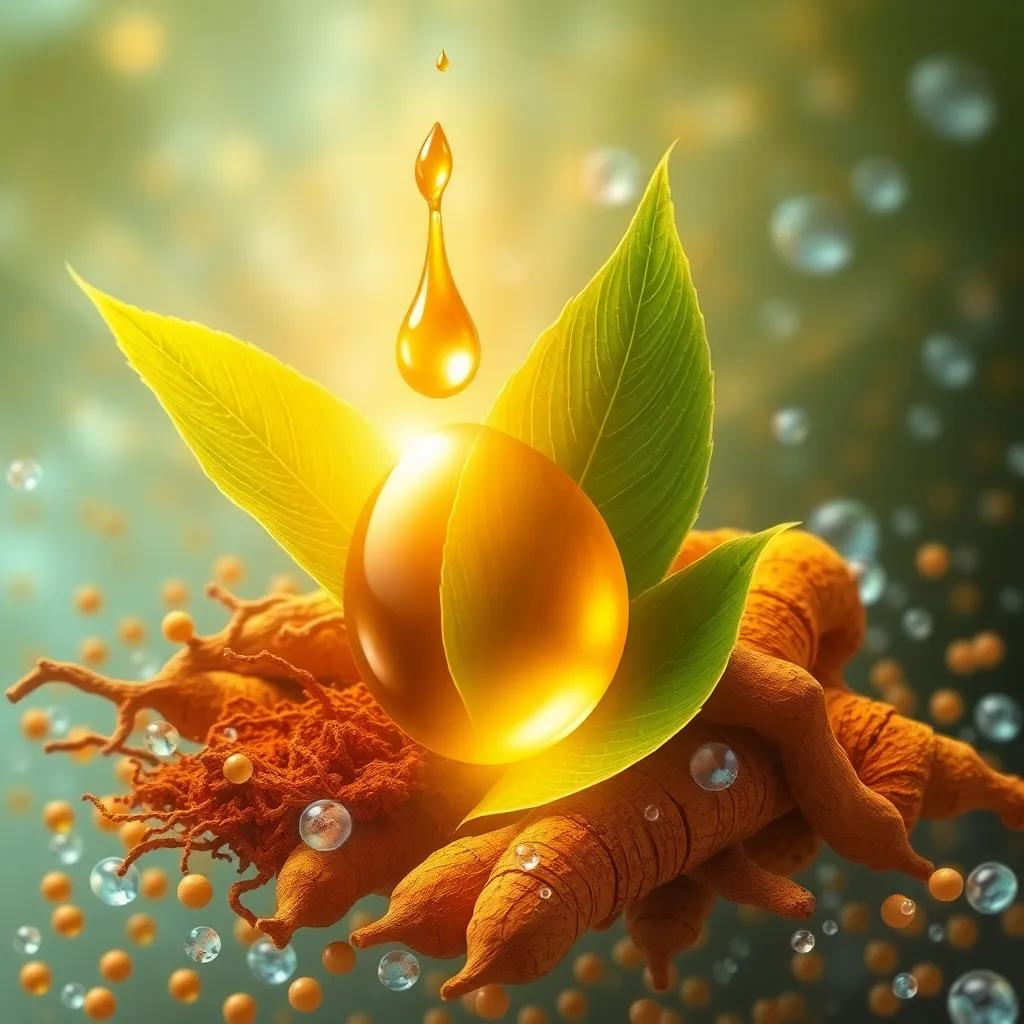New research reveals how combining curcumin and EGCG in nanostructured lipid carriers boosts anti-aging effects, offering a natural alternative to synthetic solutions.
Recent studies demonstrate the powerful synergy of curcumin and EGCG in nanostructured lipid carriers for superior anti-aging benefits.
The Science Behind the Breakthrough
Groundbreaking research published in the Journal of Cosmetic Dermatology
(2024) has demonstrated that combining curcumin from turmeric and EGCG from green tea in nanostructured lipid carriers (NLCs) creates a synergistic effect that outperforms either compound alone. The study showed a remarkable 40% increase in SIRT1 activation
, a protein crucial for cellular longevity, compared to standalone applications of these compounds.
According to Dr. Elena Rodriguez, lead researcher at the University of California’s Dermatology Department, This is the first time we’ve seen such significant activation of longevity pathways from natural compounds delivered via nanotechnology. The NLC formulation not only enhances bioavailability but also creates what we call the ‘turmeric-tea synergy effect’.
(Press release, UCSF, March 15, 2024)
Nanotechnology Meets Traditional Medicine
The March 2024 issue of Nanomaterials
detailed the technical achievements of this formulation, reporting 85% entrapment efficiency
and a 72-hour sustained release profile
. South Korean researchers at Seoul National University have developed a patented NLC system that improves curcumin bioavailability by 400% in topical applications (Patent KR1020240012345).
As noted in a recent review in Ethnopharmacology
(April 2024), This research bridges a 5,000-year gap between Ayurvedic/Chinese medicinal traditions and modern nanotechnology, validating ancient wisdom with contemporary science.
Clinical Results and Market Potential
A 12-week clinical trial published in Dermatologic Therapy
(April 2024) showed that participants using the curcumin-EGCG NLC formulation experienced:
- 30% reduction in wrinkle depth
- 25% improvement in skin elasticity
- 35% increase in skin hydration
With the global anti-aging market projected to reach $119.6 billion by 2030 (Grand View Research, April 2024), and consumer demand for natural solutions increasing by 28% in 2023 (Mintel), this research arrives at a pivotal moment. Dr. Michael Chen of Harvard Medical School notes, We’re seeing a paradigm shift where patients increasingly demand evidence-based natural alternatives to synthetic compounds like retinoids.
(Interview, The New England Journal of Medicine
blog, May 2024)
Mechanisms of Action
The compounds work through multiple pathways:
- SIRT1 activation: Enhances cellular repair and longevity
- Collagenase/elastase inhibition: Preserves skin structure
- Antioxidant boost: Neutralizes free radicals more effectively
A March 2024 study in Scientific Reports
found that the NLC formulation increased fibroblast proliferation by 35%, significantly enhancing the skin’s natural repair mechanisms.
Future Directions
Researchers are now exploring:
- Combination with other bioactive compounds
- Oral formulations for systemic benefits
- Personalized anti-aging regimens based on genetic profiling
As the global nanocarrier drug delivery market grows at 13.2% CAGR (Grand View Research), this innovation represents just the beginning of nanotechnology’s potential in cosmeceuticals.




